Canada’s immigration system is in crisis. The country lacks a coherent national strategy on immigration policy which is resulting in many challenges such as weak public support for immigration and a poor experience for applicants that the Department of Immigration, Refugees and Citizenship Canada (IRCC) refers to as “clients.”
Wait times for some programs far exceed 10 years, with no clear plan by IRCC on how it will reduce the backlogs. The federal government is now proposing to give itself the authority to cancel applications unilaterally under Bills C-2 and C-12. This is completely unacceptable. IRCC’s clients should not be penalized for the federal government’s inability to effectively manage the immigration system. Historically, Canada’s immigration system has been successful due to its predictability. Cancelling applications would further erode the predictability and competitiveness of the immigration system.
Today’s Immigration Levels Plan 2026-2028 announcement does little to instill confidence in the immigration system. Further cuts to both permanent and temporary resident levels will further exacerbate pressures on the system and client experience. The Government of Canada continues to pursue permanent and temporary resident targets which are disconnected from realities on the ground and which do not advance Canada’s threefold policy objectives of strengthening the economy, reuniting families, and providing humanitarian assistance.
The following discussion highlights ongoing challenges and contains CILA’s recommendations on how to address them.
- Processing Times: A Persistent Structural Challenge
Despite ongoing digital modernization efforts, Canada continues to struggle with lengthy and unpredictable processing times across key immigration streams. Delays are especially acute for work permit extensions and renewals. These applications by design, should be the most straightforward to process given the applicant’s established presence and track record in Canada.
For employers, this uncertainty complicates workforce planning, investment decisions, and service continuity. For foreign nationals, it jeopardizes employment stability, income security, and integration outcomes.
If Canada is to maintain its reputation as a destination for global talent, addressing the chronic backlog and improving service standards must be treated as an economic competitiveness issue, not merely an administrative one. Canada does not have a choice amid its trade dispute with the United States. Failure to enhance the competitiveness of its immigration system will undermine efforts to strengthen Canada’s economic development during a period of significant pressure on the economy. Predictable processing timelines are essential to business confidence and to the credibility of the immigration system itself.
CILA further notes that recent reductions in processing capacity, particularly for spousal sponsorships, work permit extensions and Post-Graduation Work Permit (PGWP) holders nearing permit expiry, have created significant uncertainty and forced many into status limbo or informal work arrangements. IRCC must ensure that processing volumes match stated policy objectives. Also, the reductions in targets should be aligned with clear eligibility adjustments and not left to arbitrary backlogs.
- Sustained Permanent Immigration: The Foundation of Economic and Demographic Health
Permanent immigration is not a discretionary policy lever; it is central to Canada’s demographic survival and economic sustainability. The government’s own data confirm that immigration has accounted for more than 80% of Canada’s labour force growth. As of 2023, immigrants made up 29% of the Canadian labour force while representing only 23 percent of the population. The majority of permanent resident admissions in 2025 are economic class immigrants. These individuals are selected to address national, regional, and sector specific labour shortages, particularly in health care, social services, the skilled trades, and education.
Proposed reductions to permanent resident intake in 2026–2028 risk constraining the very workforce needed to sustain economic expansion and public services. With retirements accelerating and the working-age population ratio declining, scaling back permanent residence (PR) admissions will weaken Canada’s growth trajectory at a critical juncture.
Rather than curbing PR levels, the federal government should expand and streamline pathways from temporary to permanent residence. This approach aligns near-term labour flexibility with long-term demographic and economic stability, while mitigating pressure on settlement capacity through targeted transition programs for individuals already contributing to Canada’s communities and labour market.
Failure to do so risks the emergence of an underground economy, where individuals without status continue to work informally, without legal protections or long term pathways. As a result, Canadian society will have to choose between accepting non-compliance as the new normal or facing widespread enforcement actions across the country. This phenomenon, observed in other jurisdictions, would undermine Canada’s rule of law framework and create enforcement and humanitarian challenges in the long term.
- Labour Shortages: A Structural Risk Amid National Build-Out
Labour shortages remain a defining constraint on Canada’s infrastructure, energy, and housing ambitions. Government’s Major Projects Office has identified a slate of transformative initiatives – from LNG Canada Phase 2 to small modular reactor (SMR) development at Darlington – that will require sustained access to engineering and skilled trades talent over the next decade.
At the same time, federal initiatives such as Build Canada Homes and Bill C-5 underscore the scale of the construction, energy transition, and digital infrastructure challenge ahead. Independent market analyses continue to project hundreds of billions of dollars in infrastructure activity—ports, power generation, data centers, transportation corridors – all of which depend on a reliable and expanding labour force. Yet even before these projects begin, Canada is already facing significant labour shortages across these sectors.
Given the government’s acknowledgment that immigration underpins nearly all labour-force growth, simultaneous reductions in both permanent and temporary admissions heighten capacity risks just as Canada seeks to accelerate construction; threatening both timelines and delivery capacity and compete globally. Immigration planning should therefore be calibrated to support – not constrain – national productivity and competitiveness goals.
Additionally, CILA stresses the need for sector-specific exemptions to temporary resident caps, particularly in regions like Québec where restrictive measures (e.g., 10% cap on low-wage TFWs, shorter permits) are already straining small and medium-sized enterprises and service delivery.
- Impact of Temporary Resident Caps on Higher Education and Research
Capacity reductions in international student admissions have already produced major financial shocks to universities across Canada. Institutions in Ontario and Québec are reporting significant program cuts and multi-million-dollar deficits. The University of Waterloo, for example, has projected a $75 million shortfall. These cuts risk undermining Canada’s research capacity, skilled-worker training, and global competitiveness. A balanced approach to student permitting should target bad actors without jeopardizing compliant institutions and Canada’s innovation future.
As an example of the negative impact temporary resident caps are having, take a look at the current Artificial Intelligence (AI) boom. Canada has long been a global leader in AI research and diffusion in large part due to its higher education system welcoming the top AI academics and students from all over the world. If Canada wants to harness AI to modernize its economy and society, it will need to have reasonable policies in place that enable its higher education institutions to admit top researchers and students, without fear of arbitrary visa refusals and other bureaucratic complexities.
- Family Reunification and Humanitarian Commitments
The Immigration and Refugee Protection Act (IRPA) establishes family reunification as a foundational pillar of Canada’s immigration framework – recognizing that strong, stable families are essential to successful integration, economic participation, and community well-being. However, current operational practices and processing timelines often stand in tension with this principle.
Overseas spousal sponsorship applications continue to face prolonged processing periods of up to 12 months, with many families separated for extended durations despite clear evidence of genuine relationships. In particular, cases where the couple have children together should, in accordance with IRPA’s spirit, be presumed genuine absent compelling evidence to the contrary.
To facilitate family unity and minimize hardship, application systems should permit such couples to apply simultaneously for Temporary Resident Visas (TRVs) including work permits. Canada poses barriers to sponsored spousal applications made outland and inland alike. For example, at present, a sponsored spouse must wait for an acknowledgment of receipt on their sponsorship application before they are able to apply for a work permit. This results in a lost opportunity for the family to earn income and pay taxes in Canada. It is important to note that whereas Canada enables the spouses of temporary residents to more easily obtain work permits, it does not offer the same courtesy to the spouses of permanent residence applicants.
Allowing concurrent TRV applications would enable families to reunite in Canada while the permanent residence process is finalized, aligning administrative practice with the humanitarian intent of the law. Data indicates that refusal rates for spousal sponsorship applications are approximately 7%. Denying temporary reunification serves no practical or policy purpose and only deepens avoidable family hardship when the likelihood of refusal remains low.
The Parent and Grandparent Program (PGP) in particular has experienced disproportionate cuts. PGP targets have been cut by nearly 15 percentage points more than overall permanent residence targets. This discrepancy signals a systematic marginalization of family reunification. IRCC’s own data confirms that 33% of sponsors reported increased ability to work full-time, and 85% of PGPs contribute to household tasks such as childcare and meal preparation. Despite this, the lottery system remains the only pathway, causing distress and delays. CILA calls for replacement of the lottery with a merit-based system that rewards sponsors for long-term residency, tax contributions, and caregiving needs.
The situation facing dependents of protected persons is particularly concerning. Current processing times—now averaging 50 months—undermine both humanitarian objectives and the mental health and integration prospects of resettled individuals.
Canada’s commitment to protecting the most vulnerable must include the prompt reunification of families already recognized under the refugee and protected-person frameworks. The permanent residence application form for protected persons should therefore be updated to allow dependents to apply for TRVs concurrently. This procedural reform would not only reduce the human cost of separation but also reinforce Canada’s international reputation as a fair and compassionate resettlement leader.
Moreover, Bills C-12 needlessly denies certain asylum-seekers access to a full oral hearing before the IRB in the name of “border security”, while failing to address the actual threat to the refugee system posed by the catastrophic IRB backlog. It is not unusual for countries to experience unexpected, dramatic changes in conditions. Persons from those countries (who might be in Canada on work or study permits) could therefore suddenly find themselves in need of asylum through no fault of their own—yet would be denied access to the normal refugee stream.
In addition, the one-year bar would apply to persons who may have visited Canada in the distant past, even for a few days or as children, which achieves no rational purpose. This provision renders Canada’s one-year asylum bar much stricter than that which is currently in place in the US.
Conclusion and Concrete Recommendations to address Canada’s immigration system crisis
Canada’s future prosperity rests on the effective alignment of immigration policy with workforce, demographic, and infrastructure realities. To this end, CILA recommends that the federal government:
- Prioritize service excellence and predictability in processing, especially for extensions and employer-linked applications. This includes removing provisions from Bills C-2 and C-12 that would enable the federal government to cancel applications.
- Maintain or modestly increase permanent resident targets to sustain demographic balance and economic growth.
- Expand TR-to-PR pathways to retain already-integrated workers and meet long-term labour needs efficiently. It is not good policy to welcome global talent and ask them to leave after they have contributed to Canada for years and who have established strong economic and social capital in Canada to improve their odds of successfully integrating upon gaining permanent residence. Canada should prioritize these individuals before pursuing those abroad.
- Coordinate immigration planning with national infrastructure and energy objectives to ensure sufficient skilled-labour capacity.
- Implement service standards and monitoring to ensure that family reunification streams reflect both Canada’s humanitarian obligations and its stated policy priorities
- Stabilize international student flows to safeguard institutional funding and innovation pipelines in key areas such as AI, health, and energy.
- Reform the Parent and Grandparent Program by replacing the lottery with a merit-based selection system that rewards established Canadian sponsors and supports caregiving needs.
- Ensure temporary resident caps are applied with regional and sectoral nuance, with exemptions for occupations facing verified labour shortages.
- Eliminate the one-year asylum bar proposed under Bills C-2 and C-12, or at least restrict the bar to run from the claimant’s latest entry. In addition, guarantee that those found ineligible under the bar be granted an oral hearing before a Pre-Removal Risk Assessment (PRRA) officer.
Immigration remains one of Canada’s most powerful strategic advantages. Ensuring its alignment with national development goals will be essential to building a resilient, competitive, and prosperous Canada for decades to come.



